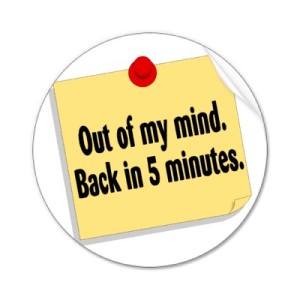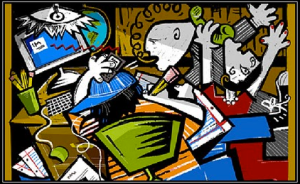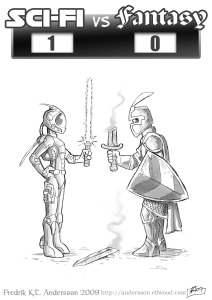The following is a white paper I wrote with Sharla Winterbottom of WinterWrite and Stacy Parker. We’re all considering careers somewhere in the world of technical communication, so we’re deeply interested by the ongoing battle between writing for an audience and single sourcing. Some “experts” are claiming single sourcing is the apocalypse of technical writing, and we should cling to the old ways as long as possible. Some say it’s the dawn of the second coming, a jumping off point for a whole new era of technical writing. Sharla, Stacy, and I believe the answer, as it usually does, lies somewhere between the two extremes.
I’m publishing this here, because I’d love to hear your opinion on this. Where do you weigh in?
Single Sourcing with Rhetoric
White Paper
The field of technical writing has evolved greatly since its humble beginnings. Technical writing today consists of skill, in-depth subject knowledge, and most importantly, rhetoric—the ability to use language effectively to inform and persuade an audience. Technical writers have adjusted and embraced the changes that have shaped today’s technical writing, especially the changes in consumers’ demands for more “user-friendly” writing. Not only do consumers expect accuracy in typical instruction manuals and everyday documents, but with the increase in web sites and online help features, user interaction with information is more important than ever. New technologies appear daily that affect technical writing and the needs of audiences.
Advantages and Disadvantages of Single Sourcing
One of the more recent changes in the field is the advent of single sourcing, which is writing information in pieces, or modules, that are saved and labeled accordingly with XML (extensible markup language) tags in order to be reused in multiple documents. The needs for consistency, clarity, and efficiency in technical writing can be met by single sourcing, which is a form of content management or managing and maintaining information. Many companies have already employed single sourcing and XML as content management solutions because of the benefits they bring:
- Writing modules of information for multiple projects one time
- Reusing modules in multiple places and formats
- Easily editing only one main document when making necessary changes
- Cutting costs because of reduced work
Given these benefits, it’s easy to see why many companies would want to single source as much of their content as possible.
However, some feel that writing reusable modules of information can leave rhetoric behind, because to reuse modules in multiple places, single sourced content must be written in a very general manner. Rhetoric that is specific to certain instances or situations would need to be taken out if it does not apply in all the instances where the content is being reused. Because the writing has to be so general, many technical writers feel that single sourcing strips away rhetorical benefits necessary to communicate effectively with a specific audience. Jeffrey Bacha states that “Single sourcing and content management strategies…not only threaten to return technical communication to product centered communication practices, they may also be establishing the elimination of audience awareness from the creation of technical documentation”(147).
Another concern with single sourcing is repetition. In order for each module of information to stand alone, concept explanations and term definitions are repeated over and over. This works well when the information modules are plugged into “frequently asked questions” or an online help format. The reader doesn’t have to search further to understand the terms and concepts used. However, when the information modules are organized into a textbook, manual, or other linear style document, the repetition of definitions and explanations can frustrate the reader.
Blending Single Sourcing and Rhetoric
Erin Joyce points out that content management systems cannot stand entirely alone: “Today, more than 60 percent of companies that have deployed Web content management solutions still find themselves manually updating their sites” (2003).
In order to address the repetition and lack of audience problems, single sourcing should employ the rhetoric that keeps audience needs in mind. Projects should be started with a single source approach. Standardizing sections of information that are in constant use creates consistency and efficiency within a company. In order to deal with repetition the technical writer can use XML tags to identify definitions and explanations within each information module. Then each time these modules are inserted into a document or project, a technical writer can edit for user-friendly transitions and rhetoric. When information modules are organized into a linear style document, the tagging system should simplify the process of pulling out unnecessarily repeated definitions and explanations.
Benefits of a combined approach include the following:
- Companies save time and benefit by consistency of information.
- Consumers appreciate that information is clear, pleasant to read, and avoids the automated feel of straight single-sourced format which can repeat too much and lack rhetoric.
- Technical writers still get to craft information with a specific audience in mind and avoid falling to a status somewhere just above automaton.
Rather than letting the changes and technology adversely affect the field of technical writing, writers need to adjust to these changes and make them work successfully. By keeping the essential audience-centered aspects in technical writing along with single sourcing, writers will be able to continue the evolving nature of the field. By adjusting single sourcing to accommodate audience needs, technical writers can enjoy the best of both worlds—the new benefits offered by single sourcing and the time-tested successes of rhetoric.
REFERENCES
- Bacha, Jeffrey. “Single Sourcing and the Return to Positivism: The Threat of Plain-Style, Arhetorical Technical Communication Practices.” Content Management: Bridging the Gap Between Theory and Practice. Eds. George Pullma and Baotong Gu. Amityville, NY: Baywood Publishing Company, Inc., 2009. 143-159.
- Joyce, E. “Study: Content Management Tools Fail.” (2003). 17 February 2010
.




